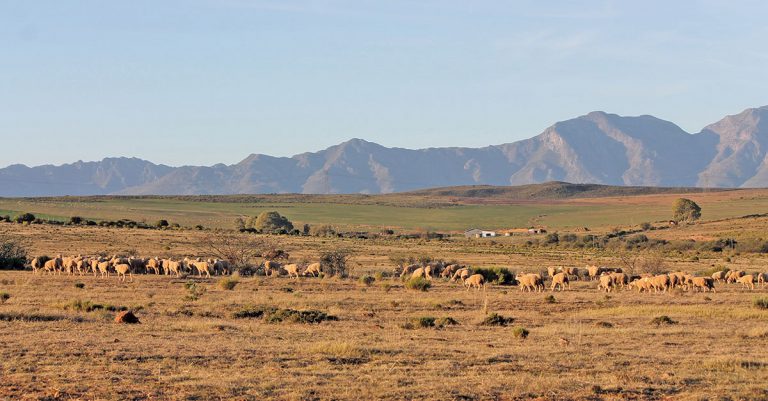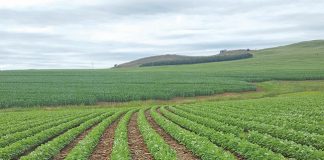
The South African government, various commercial banks and agricultural companies have introduced financing initiatives aimed at commercialising emerging farmers. Yet, despite the financial support available, many farmers still struggle to gain access to credit.
This is partly because they fail to provide all of the information needed when submitting an application.
The credit application process requires a farmer to submit a business proposal. This is used as a basis to determine whether or not to grant the loan.
A sound business proposal is therefore vital for the approval of a credit application. But an emerging farmer applying for credit for the first time can find preparing a business proposal a daunting task. Sicelo Masuku, a student at North-West University, recognised this and aimed his master’s research project in management accountancy at addressing this need.
Through his research, he identified the most common reasons that credit applications are unsuccessful, and the key elements of a successful application. He then designed a business proposal template that can be used by livestock farmers (and other farmers) when applying for funding.
Reasons for unsuccessful applications
Some 12 representatives (with an average of 17 years’ experience) from government, commercial banks and independent financial institutions took part in the research. They collectively evaluated an estimated 5 000 business proposals a year, and just over 60% of these applications were successful.
The reasons given by the participants for unsuccessful credit applications were:
- A lack of farming experience;
- Poor budgeting. Farmers overestimated their income drivers and underestimated their costs;
- Inadequate collateral due to a lack of access to agricultural land and infrastructure; and
- Lack of repayment ability (that is, the ability to pay back the loan).
Elements of a sound business proposal
Using the responses received from the participants, Masuku identified six fundamental elements of a sound business proposal that often led to a successful credit application.
Background of individual/entity
The application should provide a background of the individual or entity applying for funding. This includes a description of farming experience and management expertise.
Detailed information about the applicant will enable the evaluator to perform an accurate risk assessment. The applications of high-risk applicants are seldom approved. Adequate owner’s capital also plays a crucial role in successful applications.
Farm management
A business proposal should provide information on the farm or farming entity’s management, including work experience and educational background. ‘Farm management’ refers to the key employees responsible for overseeing day-to-day operations. They are responsible for the implementation, control and evaluation of the farming strategy.
The farm managers are the decision-makers of the enterprise; as a result, the success of the farm is greatly dependent on their expertise. Evidence should be provided of the management team’s training and technical skills.
If the farm managers’ skills are inadequate, a clear plan of further training should be included.
Farming strategy
The business strategy of the farm indicates in which direction the applicant intends to take the operation. A document presenting this strategy is therefore essential, as it is used to develop a financial forecast of the operation.
The farm strategy has to be simple, practical and easy to implement. It should describe the products the business will sell; the forecast demand and market share; the availability of inventory/stock; how and where resources will be obtained; and the purchase of capital infrastructure.
The participants in Masuku’s study said the stability and growth strategy was the element most common amongst successful livestock farmers.
The management team should ensure stability by focusing on the initial product/s and establishing a current market until they are comfortable with the operations and marketing processes and the business has a strong position in the market.
Once the business is stable, management can apply the growth strategy by introducing new products, increasing market share and acquiring more resources for expansion.
Infrastructure and resources
Another key element of a successful application is demonstrating access to infrastructure and farming resources. This includes access to grazing land, operational facilities, workers and any other assets needed for the successful operation of the entity. Land on its own is not considered in evaluating the credit application; the funders look at the complete farming infrastructure and available resources.
Financial forecast and financial analysis
The applicant should provide evidence of the entity’s financial performance, financial position, detailed cash flow, financial ratio analysis, and a feasibility study. The last element should include a financial forecast that reflects the financial journey that will be expected from the farming activities, including the assumptions made to arrive at the forecast amounts. These assumptions should be reasonable.
Financiers use the financial information to evaluate the success of the entity, determine the payback period of the loan amount, and compare the financial position of the entity to other market participants. Evaluators do not take the amounts and assumptions used to compile the financial forecast at face value, but rather weigh these against market conditions to ensure that the amounts are reasonable and accurate.
Most financiers evaluate applications on a case-by-case basis, but a few have set standards used as benchmarks for assessing applications. These standards include debt-to-equity ratio and a minimum number of livestock. The debt-to-equity ratio represents the farming enterprise’s borrowings (debt) relative to the owner’s capital (equity). A favourable debt-to-equity ratio is often a key factor when considering successful applications. In the current climate, the ratio should not exceed 50%.
Type of funding
Is short-term or long-term financing required, and what is the purpose of the requested funding? Answers to these questions should be included, as they determine the method a financier will use to evaluate an application.
Worth the effort
Generating and compiling the information needed for a business proposal is unquestionably tedious. But research shows that a sound business proposal accompanying the credit application will help improve the likelihood of success.
The process is also a useful tool for the farm management team, as it encourages them to consider their business plan and strategy more carefully.
Sicelo Masuku completed his master’s degree in management accountancy at North-West University, with Prof Sanlie Middelberg as his supervisor.
The article was written by Middelberg, based on the research conducted by Masuku.
For more information, email Middelberg at [email protected].













